Subscribe our newsletter
Please Subscribe our news letter and get update.
[newsletter]

Social anxiety disorder, previously known as social phobia, is a prevalent mental health condition characterized by intense and persistent fear of being negatively judged or observed by others. Individuals with this disorder experience overwhelming anxiety in various social situations, ranging from meeting new people and performing in front of an audience to making phone calls or even using public restrooms. This fear of scrutiny can be debilitating, interfering with daily activities and causing significant distress.
Prevalence and Demographics:
Social anxiety disorder is a common form of anxiety disorder that affects people across different age groups and backgrounds. It often manifests during adolescence, with symptoms appearing before the age of 20. Notably, women and individuals assigned female at birth tend to experience higher rates of social anxiety compared to men or those assigned male at birth.
Social anxiety disorder is a widely recognized mental health issue. Globally, approximately 5% to 10% of individuals are affected by this disorder, making it the third most common mental health condition, trailing only substance use disorder and depression. Its impact on quality of life and daily functioning underscores the importance of understanding and treating this condition effectively.
Social anxiety disorder can manifest in different ways, with individuals falling into varying levels of severity. These levels include mild, moderate, and extreme social anxiety. People with mild social anxiety may experience symptoms while still participating in social situations, whereas those with moderate or extreme forms may avoid certain scenarios altogether due to intense fear and anxiety.
While everyone experiences shyness from time to time, social anxiety disorder goes beyond occasional discomfort. Unlike shyness, which does not typically interfere with day-to-day activities, social anxiety can significantly impact education, career, and relationships. The degree of interference, intensity of fear and anxiety, and extent of avoidance of social situations are key factors that differentiate social anxiety disorder from mere shyness.
Healthcare professionals diagnose social anxiety disorder based on criteria outlined in the Diagnostic and Statistical Manual of Mental Disorders (DSM-5). These criteria include experiencing persistent, intense fear or anxiety in social situations, avoidance of such situations, disproportionate anxiety levels, impairment of daily life, and exclusion of other medical conditions. A healthcare provider may use diagnostic tools and interviews to determine if a person meets these criteria.
Effective treatments for social anxiety disorder encompass psychotherapy, medication, or a combination of both. Psychotherapy, particularly cognitive-behavioral therapy (CBT), is a key intervention. CBT helps individuals challenge negative thoughts, develop coping strategies, and gradually expose themselves to feared situations. Exposure-based CBT helps desensitize individuals to anxiety-inducing situations and enhance their confidence.
Medications, including selective serotonin reuptake inhibitors (SSRIs) and serotonin and norepinephrine reuptake inhibitors (SNRIs), are also commonly used. SSRIs like paroxetine and sertraline are often the first choice due to their effectiveness in reducing anxiety symptoms. SNRI venlafaxine may also be prescribed. These medications require time to take effect and may need dose adjustments.
Other treatment options include alternative antidepressants or anti-anxiety medications. Benzodiazepines, although effective for short-term symptom relief, have potential for habituation and sedation. Beta blockers can be used situationally, like before public speaking, to reduce physiological symptoms of anxiety.
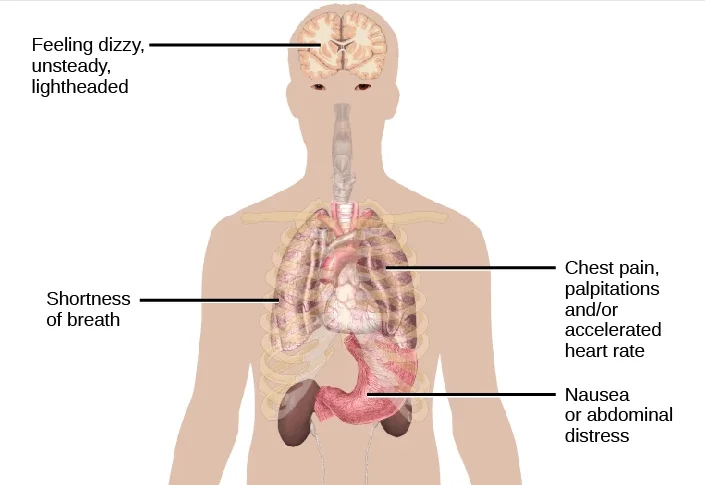
Social anxiety disorder is a widespread mental health concern that significantly impacts individuals’ lives. Understanding its prevalence, symptoms, and treatment options is crucial for both affected individuals and healthcare professionals. Effective treatment approaches such as psychotherapy and medication offer hope and relief for those dealing with the challenges of social anxiety disorder, ultimately enhancing their quality of life and overall well-being.
Credits: (https://www.bridgestorecovery.com/social-anxiety/causes-social-anxiety/)

Scope of Report
To gain a thorough understanding of the competitive dynamics within the landscape of Social Anxiety Disorder in the near to medium-long term, it is crucial to gain insights into the developmental pipeline. These insights are vital for strategically positioning a product within the market.
Market Landscape: Social Anxiety Disorder: Example Illustration: Distribution by Pipeline Candidates
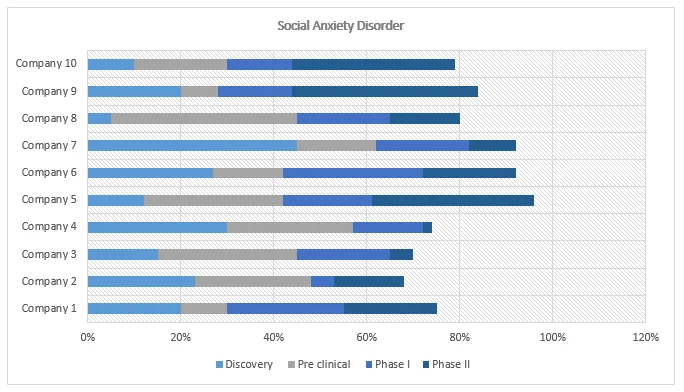
This overview underscores the involvement of stakeholders in shaping treatments for social anxiety disorder, encompassing financial considerations, treatment options, and recent advancements.

Examining patents offers invaluable insights into groundbreaking advancements and emerging technologies in the realm of Social Anxiety Disorder, enriching our comprehension of innovative strategies for novel treatments.
On the basis of the legal status of the patents:
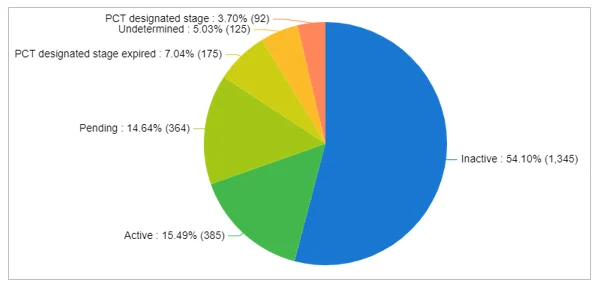
On the basis of countries of origin and their targeted markets:
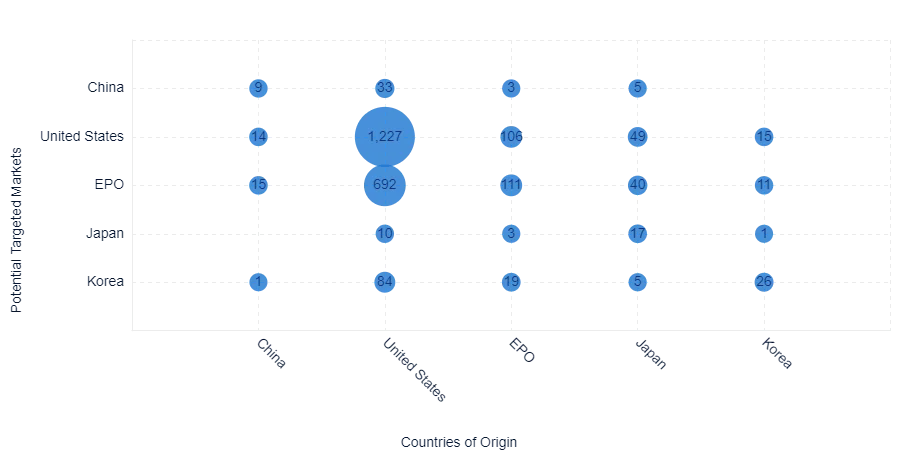
In the past five years, multiple drugs and therapies have undergone evaluation in registered clinical trials spanning various regions, progressing to advanced developmental stages for Social Anxiety Disorder.
Example illustration 1: Distribution of Clinical Trials by Status:

Example illustration 2: Distribution of Clinical Trials by Phase of Development:
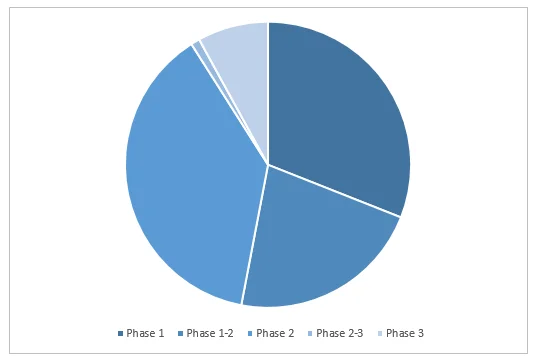
Market forecasting involves analyzing current market trends, historical data, and relevant factors to predict the future performance and growth of a specific market. In the context of the statement provided, market forecasting for the Social Anxiety Disorder (SAD) treatment market entails predicting how the market for treatments related to social anxiety.
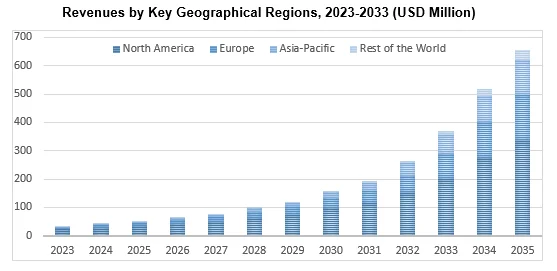
Social Anxiety Disorder: Market, 2023-2033 (USD Million)
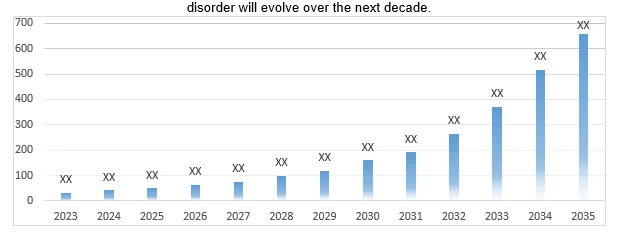
Within the domain of Social Anxiety Disorder (SAD), a diverse array of companies is active, creating an environment where new entrants could potentially emerge as significant contenders in the market. These potential contenders may seek to establish their dominance and gain a foothold by introducing innovative treatment solutions, leveraging advancements in therapeutic approaches, and catering to the evolving needs of individuals affected by social anxiety disorder.
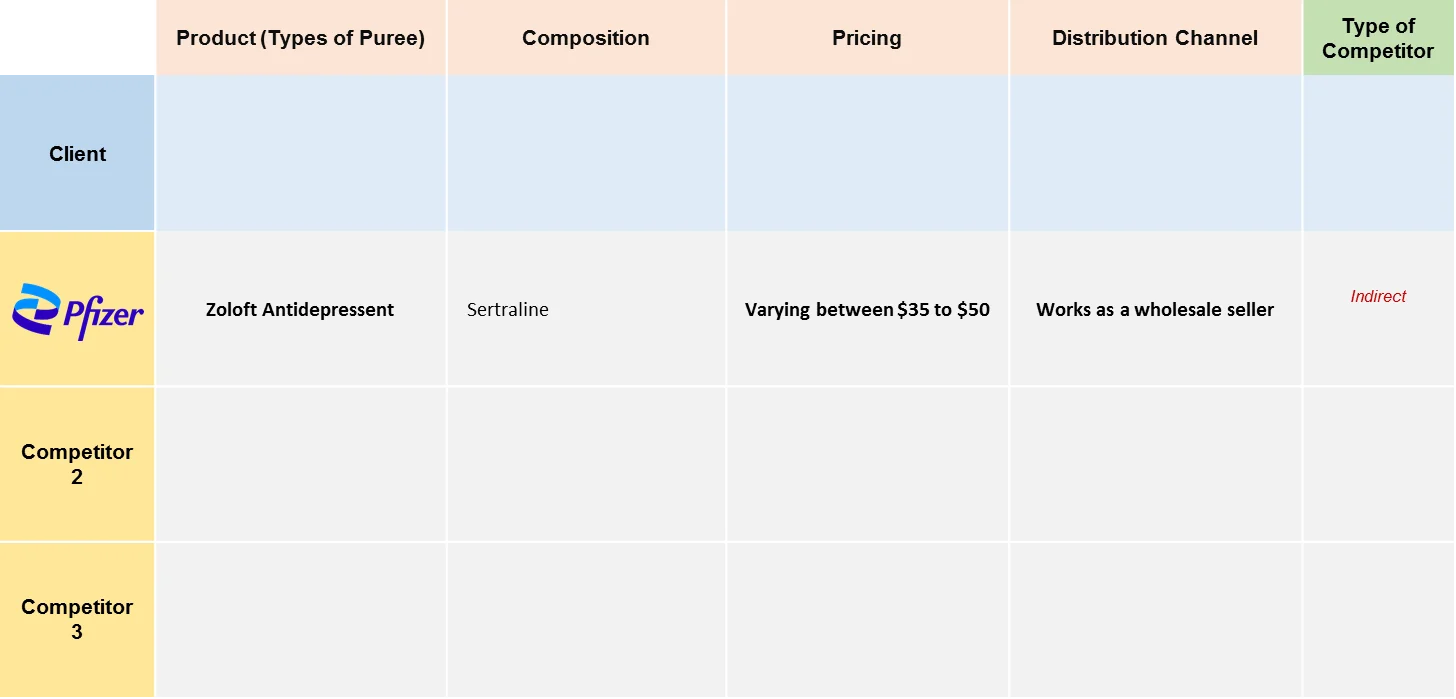
Unveiling Social Anxiety Disorder Characteristics and Mechanisms: Delve into the unique characteristics and underlying mechanisms of social anxiety disorder, shedding light on its intricate nature.
Integrated Treatment Approaches: Symptomatic, Pharmacological, and Therapeutic Strategies: Gain insight into a comprehensive range of treatment approaches for social anxiety disorder, encompassing symptom alleviation, medication-based interventions, and therapeutic strategies.
Timely Identification and Effective Management: Navigate strategies for early detection and successful management of social anxiety disorder to improve outcomes.
Advancements in Targeted Therapies for Social Anxiety Disorder: Explore the latest developments in targeted therapies designed to address the challenges associated with treating social anxiety disorder.
Global Market Dynamics and Investment Prospects: Evaluate the evolving landscape of the social anxiety disorder treatment market, identifying potential trends and investment opportunities.
Social Anxiety Disorder Treatment Landscape and Patent Analysis: Examine the latest advancements in treatment options and patent developments, shedding light on innovative approaches for addressing social anxiety disorder.
Exploring Social Anxiety Disorder Market Opportunities: Dive into potential growth prospects and investment avenues within the social anxiety disorder treatment market.
Market Dynamics and Emerging Trends: Gain valuable insights into the current and projected market dynamics, alongside emerging trends that are shaping the landscape of social anxiety disorder treatment.
Pipeline Progress and Treatment Evaluation: Assess emerging therapeutic options and their potential impact on the social anxiety disorder treatment landscape.
Ongoing Clinical Trials in Social Anxiety Disorder: Explore ongoing clinical trials to uncover new insights into the advancement of treatments for social anxiety disorder.
Key Industry Players in Social Anxiety Disorder Space: Familiarize yourself with influential organizations driving research and innovation in the field of social anxiety disorder treatment.
In order to give the most precise estimations and forecasts, Wissen Research uses an extensive and iterative research approach that is focused on reducing deviation. The company blends top-down and bottom-up methodologies for market segmentation and quantitative estimation. In addition, data triangulation, which examines the market from three separate angles, is a recurrent topic present in all of our research studies. Important components of the approach used for all of our studies include the following:
Preliminary data mining
On a wide scale, unprocessed market data is collected. Continuous data filtering makes sure that only verified and authenticated sources are taken into account. Additionally, data is extracted from a wide range of reports in our repository and from a number of reputable premium databases. We gather information from raw material suppliers, distributors, and purchasers to help with this since understanding the entire value chain is crucial for a thorough understanding of the market.
Surveys, technical symposia, and trade magazines are used to gather information on technical concerns and trends. Technical information focusing on white space and freedom of movement is also obtained from an intellectual property standpoint. Additionally, information on the industry’s drivers, constraints, and pricing patterns is obtained. As a result, a variety of original data are included in the material that is then cross-validated and certified with published sources.
Statistical model
We use simulation models to generate our market projections and estimates. Every study receives a special model that is tailored to it. Data for market dynamics, the technology environment, application development, and pricing patterns are gathered and supplied into the model all at once for analysis. The relative relevance of these factors is investigated, and their impact on the forecast period is assessed, using correlation, regression, and time series analysis. The process of market forecasting combines technological analysis with economic strategies, practical business acumen, and subject expertise.
Econometric models are frequently used for short-term forecasting, but technology market models are typically employed for long-term forecasting. These are based on a confluence of the business environment, regulatory environment, economic projection, and technical landscape. In order to develop global estimates, it is preferable to estimate markets from the bottom up by integrating data from key regional markets. This is required to ensure accuracy and a complete comprehension of the subject. Among the variables taken into account for forecasting are:
Regulations and anticipated developments
We give these criteria weights and use weighted average analysis to assess their market influence in order to calculate the anticipated market growth rate.
Primary research | Secondary research |
· Manufacturers · Technology distributors and wholesalers · End-user surveys · Consumer surveys | · Company reports and publications · Government publications · Independent investigations · Economic and demographic data · Online searches · Literature studies · Research reviews · Case studies · Reference customers |
1.1 Overview of Social Anxiety Disorder
1.2 Key Findings
1.3 Market Insights and Recommendations
2. Introduction
2.1 Research Background
2.2 Scope and Methodology
2.3 Report Structure
3. Disease Overview
3.1 Definition and Classification of Social Anxiety Disorder
3.2 Symptoms, Diagnosis, and Clinical Presentation
3.3 Pathophysiology and Genetic Basis
3.4 Epidemiology and Prevalence
3.5 Causes and Risk Factors
3.6 Treatment
4. Market Landscape
4.1 Market Size and Growth Trends, 2023-2033 (USD Million)
4.2 Market Segmentation (By Type, Treatment, etc.)
4.3 Competitive Analysis of Key Players
4.4 Market Drivers and Challenges
5. Patent Analysis
5.1 Overview of Social Anxiety Disorder Patents
5.2 Top Assignees
5.3 Geography Focus of Top Assignees
5.4 Medications and Drug Classes
5.5 Legal Status
5.6 Geography
5.7 Assignee Segmentation
5.8 Network Analysis of Top Collaborators
5.9 Technology Evolution
5.10 Key Patents
5.11 Patent Trends and Innovations
5.12 Key Players and Patent Portfolio Analysis
6. Diagnostic Approaches and Tools
6.1 Psychological Assessment
6.2 Cognitive Behavioral Therapy (CBT)
6.3 Psychiatric Evaluation
6.4 Other Diagnostic Modalities
7. Clinical Trial Analysis
7.1 Chapter Overview
7.2 Analysis by Trial Registration Year
7.3 Analysis by Phase of Development
7.4 Analysis by Number of Patients Enrolled
7.5 Analysis by Status of Trial
7.6 Analysis by Study Design
7.7 Analysis by Type of Product
7.8 Analysis by Geography
7.9 Analysis by Key Sponsors / Collaborators
8. Treatment Options
8.1 Psychotherapy
8.2 Medications (Antidepressants, Anxiolytics, etc.)
8.3 Emerging Treatment Approaches
8.4 Product Analysis of Treatment Options
9. Market Analysis by Region
9.1 North America
9.2 Europe
9.3 Asia-Pacific
9.4 Latin America
9.5 Middle East and Africa
10. Competitive Landscape
10.1 Company Profiles
10.2 Product Portfolio Analysis
10.3 3 Recent Developments and Strategies
11. Future Outlook and Market Opportunities
11.1 Advancements in Research and Technology
11.2 Unmet Needs and Potential Market Gaps
11.3 Market Forecast and Growth Opportunities
12. Conclusion
13. Appendix
13.1 Glossary of Terms
13.2 List of Abbreviations
13.3 References
S.no | Key Highlights of Report | |
1. | Patent Analysis | · Top Assignee · Geography focus of top Assignees · Assignee Segmentation · Network analysis of the top collaborating entities in Social Anxiety Disorder patent applications · Technology Evolution · Key Patents · Application and Issued Trend · Key technology |
2. | Market analysis | · Current Treatment Options · Emerging Therapies and Research Developments (by product analysis and scientific analysis) · Strategic activities · Therapeutic activity of drugs · Company portfolio |
3. | Clinical Trials | · Analysis of clinical trial through graphical representation · Coverage of treatments from pre-clinical phases till commercialization (also including terminated and completed studies) |
4. | Forecast | · Detailed comprehension of the historic, current and forecasted trend of market by analysis of impact of these treatments on the market |
5. | Key Players | · Detailed profiles of the key players that are engaged in the development of approved drugs · Strategic Activities |
6. | Opportunity Analysis | · Technology evolution based on problem solution · Potential licensees · Geography of suppliers · Treatment trends · Unmet needs · SWOT · Drivers and barriers |
7. | KOLs | · A detailed analysis and identification of the key opinion leaders (KOLs), shortlisted based on their contributions |
LIST OF FIGURES
Figure number | Description |
Figure 1 | Terminology of Social Anxiety Disorder Over The Years |
Figure 2 | Social Anxiety Disorder Treatment– History and Present |
Figure 3 | Projection of Social Anxiety Disorder till 2033 in different geographies |
Figure 4 | Technology Categorization Of Drug Delivery Methods For Social Anxiety Disorder |
Figure 5 | Recent Technology Trends in Social Anxiety Disorder |
Figure 6 | Technology Evolution in Drug Delivery Market of Social Anxiety Disorder |
Figure 7 | Geographical Distribution of Patents of Top Assignees |
Figure 8 | Assignee Segmentation (Companies) |
Figure 9 | Assignee Segmentation (Educational Establishment) |
Figure 10 | Patent Based Key Insights Of xx |
Figure 11 | Patent Based Key insights of xx |
Figure 12 | Patent Based Key insights of xx |
Figure 13 | Geographic Distribution of the Universities/Research Organizations Filling Patents On Various Drug Delivery Approaches |
Figure 14 | Key Summary Regarding the Patent Filing On Social Anxiety Disorder |
Figure 15 | Product Pipeline of Different Approaches with Companies Name |
Figure 16 | Portfolio for Approved Product |
Figure 17 | Clinical Trials Conducted till Date by Different Companies and Universities |
Figure 18 | Clinical Trials based Key Insights |
Figure 19 | Key Growth Drivers for Social Anxiety Disorder Market |
Figure 20 | Restraints for Social Anxiety Disorder Market |
Figure 21 | xx Portfolio (Top Player) |
Figure 22 | xx Portfolio (Top Player) |
Figure 23 | xx Portfolio (Top Player) |
Figure 24 | xx Portfolio (Top Player) |
Figure 25 | xx Portfolio (Top Player) |
Figure 26 | xx Portfolio (Start-up) |
Figure 27 | xx Portfolio (Start-up) |
Figure 28 | xx Portfolio (Start-up) |
Figure 29 | Strategic Activities Including Collaboration, Partnerships and Acquisitions |
Figure 30 | Research Methodology for Patent, Selection and Analysis |
Figure 31 | Research Methodology for Scientific Literature, Selection and Analysis |
Figure 32 | Research Methodology for Clinical Trials, Selection and Analysis |
LIST OF GRAPHS
Graph number |
Description |
Graph 1 | Number of people worldwide with Social Anxiety Disorder |
Graph 2 | Problem Solution Analysis |
Graph 3 | Top Assignees in Social Anxiety Disorder |
Graph 4 | Technology Focus of Top Assignees (IPC-CPC Classes) |
Graph 5 | Top Countries of Origin of Patents |
Graph 6 | New entrants in drug delivery field |
Graph 7 | Legal Status |
Graph 8 | Most Cited Patents |
Graph 9 | Patents with Largest Invention Families |
Graph 10 | Most Claim-Heavy Patents |
Graph 11 | Filing Trends |
Graph 12 | Literature Filling Trend During Time Period (2018 – 2023) |
Graph 13 | Clinical Trial Filing Timeline |
Graph 14 | Recruitment Status of the Clinical Trials Related to the Different Drug Delivery Approaches |
Graph 15 | Clinical Trials Phases with Respect to Specific Drug Delivery Approach |
Graph 16 | Weighted Scores for Top 64 Players According to Benchmarking Criteria |
Graph 17 | Social Anxiety Disorder (CAGR: 2023-2033) |
Graph 18 | Social Anxiety Disorder Market Share: Distribution by Key Geographical Area, 2023-2033 |
LIST OF TABLES
Table number | Description |
Table 1 | Parameters included and excluded for conducting the analysis |
Table 2 | Technology Classes with Definitions |
Table 3 | Patent Litigation |
Table 4 | Highest Market Valued Patents |
Table 5 | SWOT Analysis of Top 3 Players |
Table 6 | Parameters and their score for Benchmarking |
Table 7 | Weighted scores for top 5 players according to benchmarking criteria |
Please Subscribe our news letter and get update.
© Copyright 2024 – Wissen Research All Rights Reserved.